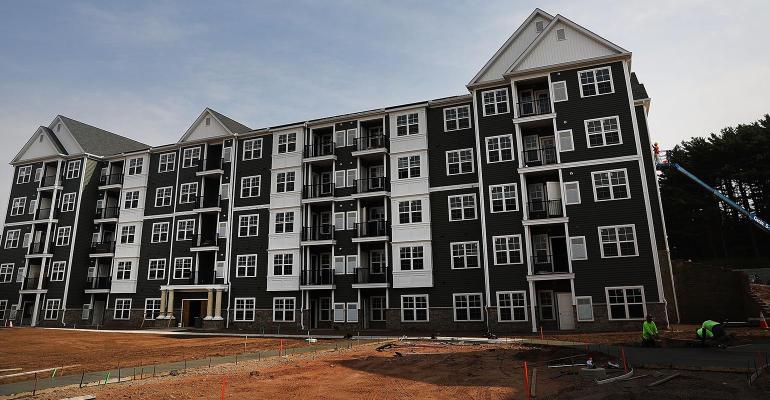During the past several decades, real estate has moved from the sidelines to become a viable alternative investment. Experts position real estate investments as ideal strategies for portfolio diversification, downside protection and cash-flow during both boom and bust times.
But what these experts don’t often mention is that “real estate” encompasses a broad range of assets. As such, the idea that real estate can be a recession-resilient investment is an oversimplification. This belief ignores the fact that different types of real estate respond differently to economic factors depending on product type, age, geography, life cycle phase and many other considerations.
Indeed, certain types of investment real estate—especially multifamily housing—tend to perform better during downturns. And within the category of multifamily housing, workforce housing is fast becoming a wise investment choice for high-net-worth investors during volatile economic periods.
Residence and Recessions
Multifamily tends to do well because it serves a basic need: People always need somewhere to live.
But the multifamily sector serves two types of renters: renters by choice and renters by necessity. Renters by choice lease an apartment or house based on personal preference rather than finances. Renters by necessity, meanwhile, must rent because their financial situations make it difficult, if not impossible, to become homeowners.
Workforce housing serves renters by necessity—typically working-class Americans who earn too much to qualify for “affordable housing” but not enough to afford rents commanded by newer, higher-end multifamily apartment complexes.
Workforce housing differs from affordable housing for several reasons:
- Workforce housing serves occupants earning between 60% and 120% of the area median income (AMI), whereas affordable housing is typically eligible to households with annual gross incomes less than 80% of the AMI.
- Workforce housing isn’t government-subsidized, whereas most affordable housing is partially or fully supported by public agencies.
- Workforce housing rarely occurs as ground-up development. Rather, it’s an outgrowth of “naturally occurring affordable housing”—i.e., properties that are less desirable to higher-income earners due to age or location.
Nevertheless, well-maintained, and well-operated, workforce housing provides a safe and comfortable living environment within easy commuting distance of major employment centers. As such, the fundamentals of workforce housing make it a stable and resilient investment option during times of economic uncertainty.
Supply-Demand Imbalance
What are these fundamentals? Simply put, high demand and low supply.
On the demand side, workforce housing caters to working-class Americans who can afford neither home ownership at current prices and rates nor standard market-rate apartment rentals. Recent analyses by CBRE and CoStar estimate at least 13.5 million households in need of this type of housing.
Unfortunately, the current supply sits at roughly 12 million, creating a significant supply-demand imbalance. Production of new workforce housing is challenged by the financial feasibility of such projects in the wake of high labor and construction costs, so the available stock of workforce housing tends to be aging properties typically built before the year 2000.
Further exacerbating conditions are other market trends:
- An overall slowdown in housing production since the early 2010s;
- Replacement of older Class B and C properties with new ground-up Class A product; and
- Value-add upgrades to existing “vintage” properties with the goal of charging higher rents outside the budget of middle-income households.
These factors combine to reduce the available pool of workforce housing opportunities even further.
A Sensible Investment
While the supply-demand imbalance creates housing challenges for working-class families, it also increases the appeal of workforce housing to investors as an effective defensive investment strategy.
One reason is low turnover. Tenants of workforce housing don’t have many options, reducing the likelihood they move out. This means more reliable and ongoing cash flows. It also means fewer resources dedicated to finding, vetting and onboarding new tenants.
Another reason is comparatively fewer late collections and delinquencies. Workforce housing tenants are typically employed with steady and predictable incomes that can consistently cover the costs of monthly rent. This improves the likelihood of on-time rent payments and fewer delinquencies.
Finally, there is the potential for positive social impact. Firms like Revitate Cherry Tree don’t buy workforce housing to make cost-intensive “luxury” upgrades that require significant rent increases. Instead, the intent is to preserve and extend comfortable and safe housing for working-class Americans. This means fewer capital expenditures and fewer empty units taken offline for complete overhauls.
For investors, these fundamentals mean immediate and attractive risk-adjusted returns, especially when compared with other types of multifamily housing. These returns are also improved by operational efficiencies instituted by experienced property managers able to reduce operating costs and increase net operating income.
Finally, the high demand for this property type, coupled with the stability of its tenants, can lead to asset appreciation over time—especially for properties located in metropolitan areas with compelling long-term population and employment growth trends.
Ultimately, amid significant economic uncertainty, workforce housing offers a compelling path to stability for investors and tenants alike. Wealth managers would be wise to pay close attention to this segment of the real estate market in the months and years to come.
Chris Marsh is co-founder and general partner of Revitate Cherry Tree.





